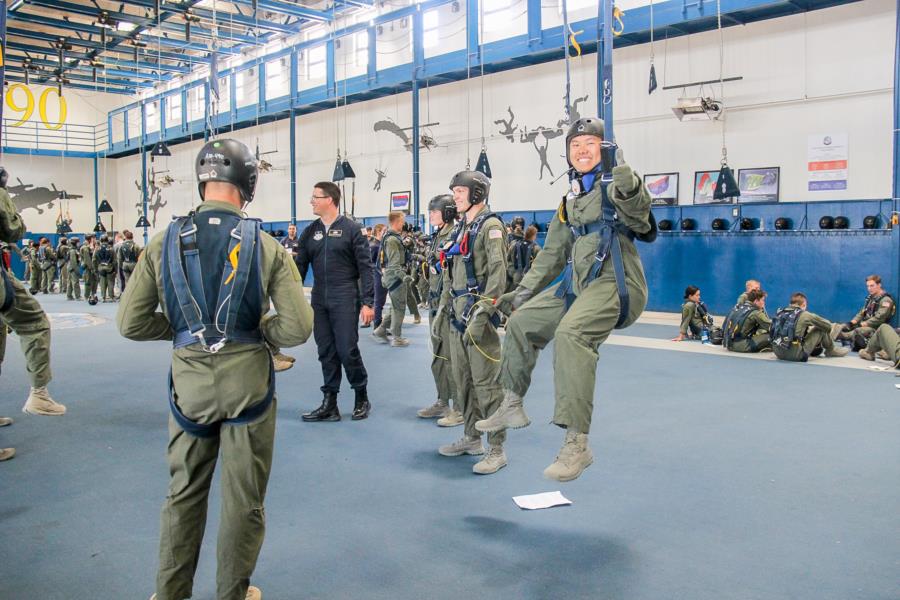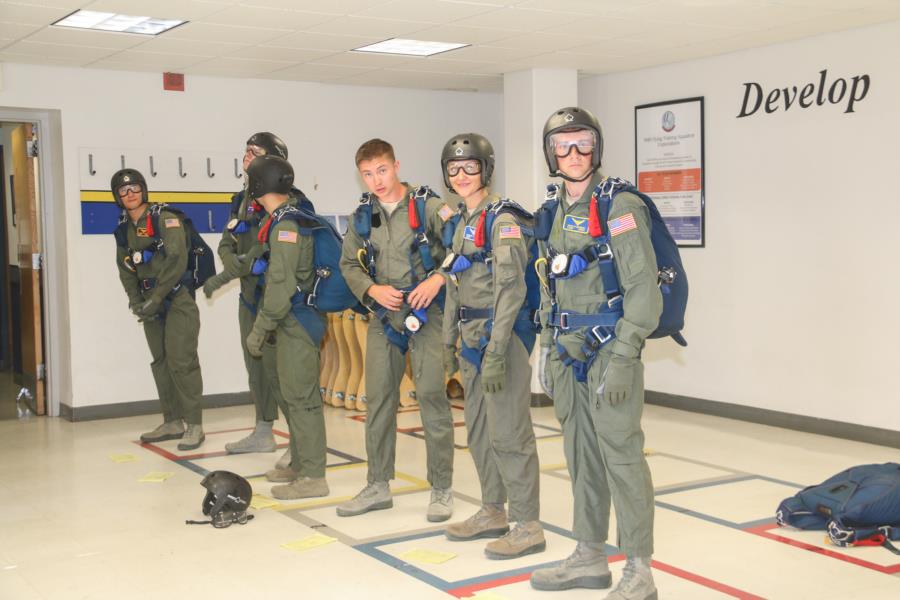Upperclassmen Programs!
Powered Flight!
The Powered Flight Program started back in 1974 and until 2012 it only saw small changes in flight paths. In 2012, because of airspace conflicts there was a complete redesign of USAFA's airspace and how it was structured. From there, the Air Force and the FAA coordinated and created the "safest possible approaches, departures, training areas and flight patterns for USAFA operations," which were finally put into action in early 2013.
Powered Flight is a capstone course that serves as a culmination of a cadet’s aviation education. Lessons in Air Force heritage and principles of engineering are applied in real-life scenarios during nine flights in a single engine propeller driven aircraft. The training includes ground and flight instruction using T-53s, military instructors provide a basic introduction to Air Force pilot training and the experience of powered flight. Based on proficiency, approximately 50% of these students will solo. The training includes ground and flight instruction under an Air Education and Training Command (AETC) flying syllabus.
Over the course of each summer period cadets have roughly 6 Flights they need to complete, unlike previous years this year also has similiar to the academic year M and T day in the form of Blue and Silver Fly days. We were able to stop by both recently.
Because of the weather we have only been able to catch a glimpse of some of the Cadets going through Powered Flight, between now and the end of 2nd Period we will be sure to catch the rest of the Cadets going through!




To view the rest of the pictures from our visit go to; Galleries - Airmanship - Powered Flight. Or click the link below.
Soaring!
The Basic Soaring program (Airmanship 251) provides a motivational experience for all 3rd class cadets. This program is the largest Glider operation in the world and its mission is to build character, and help motivate cadets as well as form the foundation of cadet exposure to military aviation, which is what many of them will do in their Air Force careers following their 4 years at the Academy. The cadets first experience soaring in the TG-10B or TG-16A which familiarizes them with aircraft controls, the ever-present crew checklists, area/pattern work, and the perspective to earth.
Cadets at Soaring are making their way through their 14 Flights. Once they have completed and passed 10 accompanied flights, they are able to go for their solo flight. Taking summer Soaring will also make them eligible for AM 461, the Cadet Instructor Pilot Upgrade program which they would take their Sophomore year to become a Soaring IP.
So far during 2nd Period we have been able to catch Cadets in B Flight and C Flight. Between now and the end of 2nd Period we will be sure to catch A Flight so check back between now and then!




To view the rest of the pictures from our coverage of B Flight and C Flight go to; Galleries - Airmanship - Soaring. Or click the link below.
Summer Soaring - 2nd Period - B & C Flight
Jump!
This is one of the more challenging programs provided by USAFA, Airmanship 490 or AM-490 is a Basic Freefall Parachuting Program that the Academy offers and it is the core mission of the Wings of Blue and the 98th Training Squadron, all of the Cadets on the Wings of Blue team are certified AM-490 Instructors and Jumpmasters. Its purpose is to develop leadership traits through overcoming their own fears. They will be given instruction in basic free fall parachuting and familiarization with emergency parachuting. The successful completion of 5 Jumps results in award of the Air Force basic parachutist badge "Jump Wings", which they can wear on their uniform for the rest of their Air Force career and completion during summer before sophomore year fills one of the few military training requirements that Cadets at USAFA have. Several hundred Cadets over the course of this summer will have to "STAND IN THE DOOR."
AM-490 is the only program in the entire world where the first jump is an unassisted freefall. Because of this unique difference all students, cadet or staff who go through this program will have roughly 40 hours of ground training before their first jump.
A typical week down at AM-490 for the summer periods involves Ground Training from Monday to Wednesday and then first thing Thursday morning the Cadets are bussed up to Denver to experience a Wind-Tunnel and then brought back down to the Academy to begin jumping. The weather in the summer here at the Academy usually consists of windy afternoons. So we never know what will happen once we get to that first Thursday for Jumps. Thankfully each group that goes through AM-490 has 2 weeks from start to finish to achieve their 5 jumps to earn their wings. Their second week is specifically for the Cadets and Staff going through AM-490 to have multiple jump opportunities until they achieve their 5th and final jump.
2nd Period began on Monday and we were able to catch the first Group going through GT earlier in the week as well as the ROTC group getting in their Jumps! Be sure to check back for our coverage of 2nd Periods 1st Group getting their jumps and the 2nd group going through Ground Training next week!








To view the rest of our glimpse into the 2 groups currently going through AM-490 go to; Galleries - Airmanship - Jump. Or click the link below.
Summer Jump - 1st Period - ROTC
Summer Jump - 2nd Period - 1st Group
ESET!
Hey 2020 Parents! We're back with coverage from this summer's ESET Program.
Expeditionary, Survival, and Evasion Training (ESET) is a required training program all rising 3 degree Cadets must go through.
The purpose of ESET is to briefly introduce aspects of operational deployed environments to Cadets to prepare them, and give them a quick look into what they may be asked to do in the near future. The training lasts ten days and is split between classroom and field exercises.
Students will live in one of the two mock Forward Operating Bases (FOBs) while being trained by the Combat Operations and Survival Squadrons. The two FOBs, Chapman and Cunningham, are named after two Air Force Pararescuemen killed in action in Afghanistan. The Students learn in one FOB and then move to the other to be evaluated by different Cadre. Cadet Cadre in the Survival and Combat Ops squadrons have been preparing since January for their teaching roles.
Cadets going through Survival training will learn about: setting snares, preparing small and large game, building shelters, making fires, setting signals, recovering aircrew members who have gone down in hostile territory, evading capture, and several other more secretive training exercises.
Cadets going through Combat Operations training will learn about: patrolling for hostiles, military operations in urban terrain (MOUT), M9 firing and assembly, integrated base defense, counter IED training, and more.
Pictures from 2nd Periods, 1st Group of ESET are up!




To view the rest of the pictures from our visit go to; Galleries - Summer Programs - ESET. Or click the link below.
We will be catching the 1st and 2nd Groups going through RPA next week so be sure to check back for coverage on our Upperclassmen Programs!



